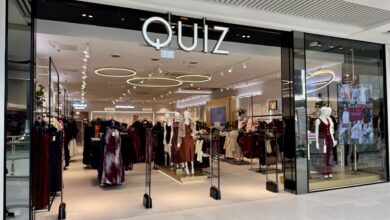What does Shein’s potential IPO mean for the company and its competitors?
Retail Sector discusses what a potential IPO for Shein may mean for the company and its future prospects as well as its competitors

Register to get 1 free article
Reveal the article below by registering for our email newsletter.
Want unlimited access? View Plans
Already have an account? Sign in
Chinese fast-fashion retailer Shein has reportedly been mulling launching an Initial Public Offering (IPO) on the London Stock Exchange for the past year. This float would be the first time the company has been publicly listed anywhere in the world and would represent a large moment in the retail space. Any IPO would have an effect on the way that Shein currently operates including questions about its business practices in its supply chains as well as environmental concerns. It would also have a profound effect on its competitors as its aforementioned business practices have disrupted the market.
Market disruption and expansion
Shein has disrupted traditional retail models with its agile supply chain, rapid trend adaptation, and direct-to-consumer approach. An IPO would provide Shein with substantial capital to further expand its global footprint, strengthen logistics infrastructure, and invest in technology for enhanced customer engagement.
As Guy Elliot, head of retail and consumer products at Publicis Sapient, explains, a potential IPO would legitimise Shein in the marketplace and help it to expand. “Shein’s potential London IPO would take it from a challenger brand to a key player in the global retail market. Unfortunately for “legacy retailers”, this is a signal that discount fast-fashion retailers are not going away anytime soon.
“This move would bring it from the sidelines into the heart of international retail, and other ecommerce brands would be right to be cautious. With an innovative business model, most brands can’t compete with Shein on price or breadth of offering, so they will have to turn to tech such as AI/GenAI to optimise their supply chain to minimise costs (while also minimising delivery times, which is one of the few ways to compete with Shein’s model) and to optimise their customer experience (CX),” he says.
It is the advantages that a public listing would bring which causes concern for competitors like Zara, H&M, and ASOS. Shein’s ability to offer clothing at competitive prices, coupled with its data-driven approach to inventory management and marketing, has already challenged established players. A successful IPO would likely bolster Shein’s market position and increase its ability to undercut rivals on price and speed to market.
As Alexander Otto, head of corporate relations at Tradebyte, states, the IPO might be good for the London Stock Exchange; other clothing retailers will not greet it kindly.
“Whilst it might be true from a business perspective that boasting the Shein IPO would be good for the The London Stock Exchange after a disastrous 2023, retailers may have a more divided view. It would certainly represent a slap in the face for UK and European attempts to achieve a more regulated and sustainable industry away from ‘fast fashion’.
“Moreover, the ‘winner-takes-it-all’ marketplace model has negative connotations for retail as a whole. On the other hand, the ‘super seller’ approach does encourage other players to innovate to keep up, while fast fashion’s high margins can provide a much needed industry boost,” he states.
ESG and reputation challenges
However, a public listing could cause questions to be asked about Shein’s business practices. Shein has faced scrutiny over its labour practices and environmental impact, which could become amplified with increased public scrutiny post-IPO. Investors and consumers alike are increasingly focused on sustainability and ethical practices, posing both a challenge and an opportunity for Shein to improve its ESG (Environmental, Social, and Governance) credentials.
Tom Wormald, managing partner at Yonder Consulting, believes that Shein’s success has primarily been built on its ability to deliver affordable items quickly.
“If the IPO locks them into this model, it permanently limits their market to customers who strongly prioritise low price over sustainable and ethical practices – which also limits their ability to reap the benefits of customer-driven growth, and this constrains value to investors. If, however, the IPO offers flexibility and room to invest in different business models, it will allow the company to reach new audiences and grow beyond where they are now,” he says.
The IPO would also attract significant investor interest, reflecting Shein’s status as a leader in the fast-fashion segment. However, valuation discussions are likely to centre around Shein’s revenue growth, profitability, and potential risks such as regulatory scrutiny and supply chain vulnerabilities.
“To go public successfully, Shein must show significant growth potential from where they are now – perhaps taking the market share from ASOS or Boohoo; brands that share a similar customer base. But in light of critique on sustainability and workers’ rights, Shein must find a way to extend beyond the practices that attracted criticism in order to maximise the value of the IPO – and this is where the difficulty arises. Does an IPO for businesses like Shein restrict potential for customer-driven, meaningful growth?” Wormald added.







